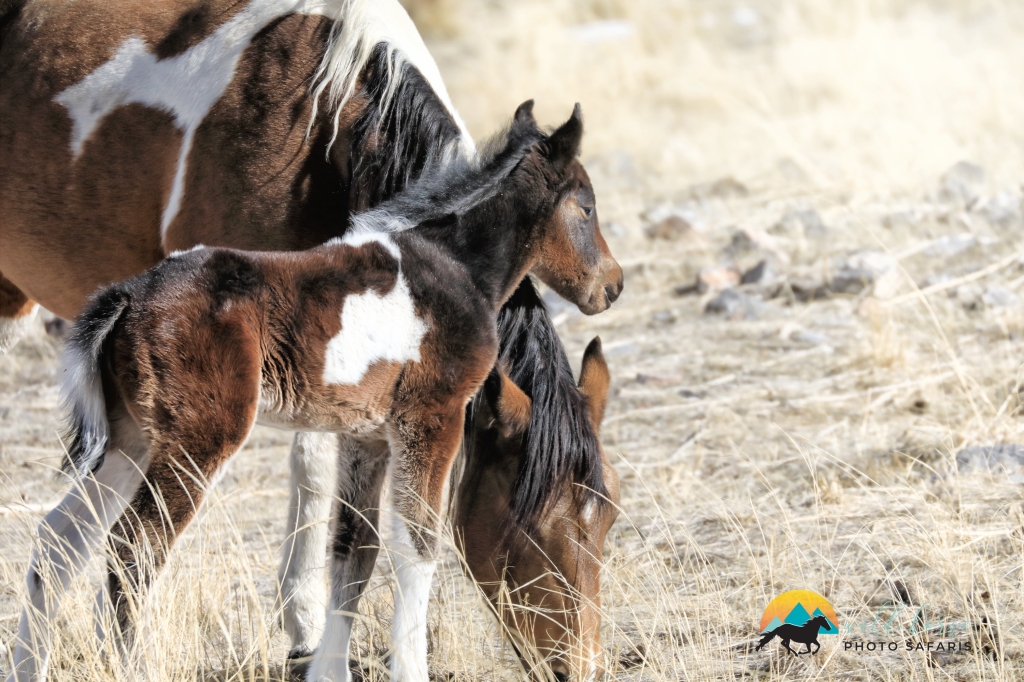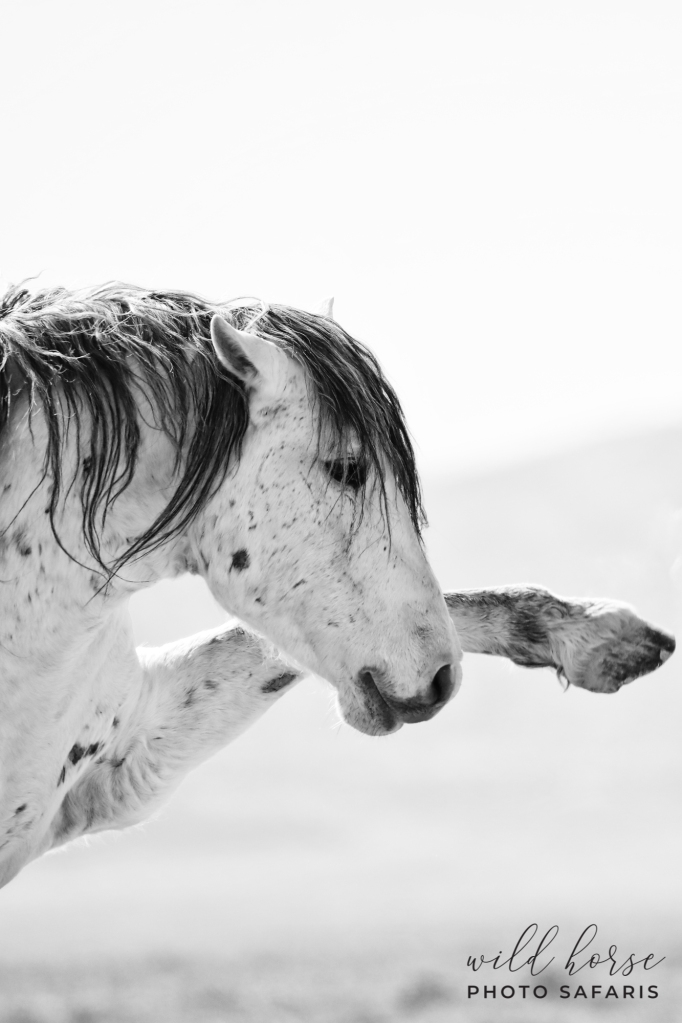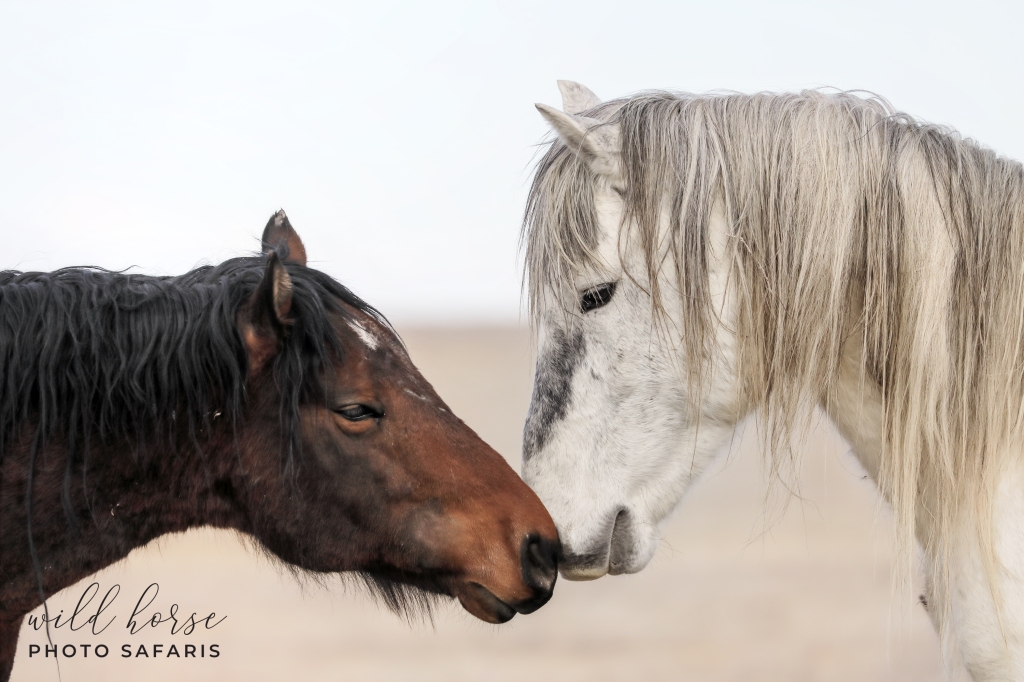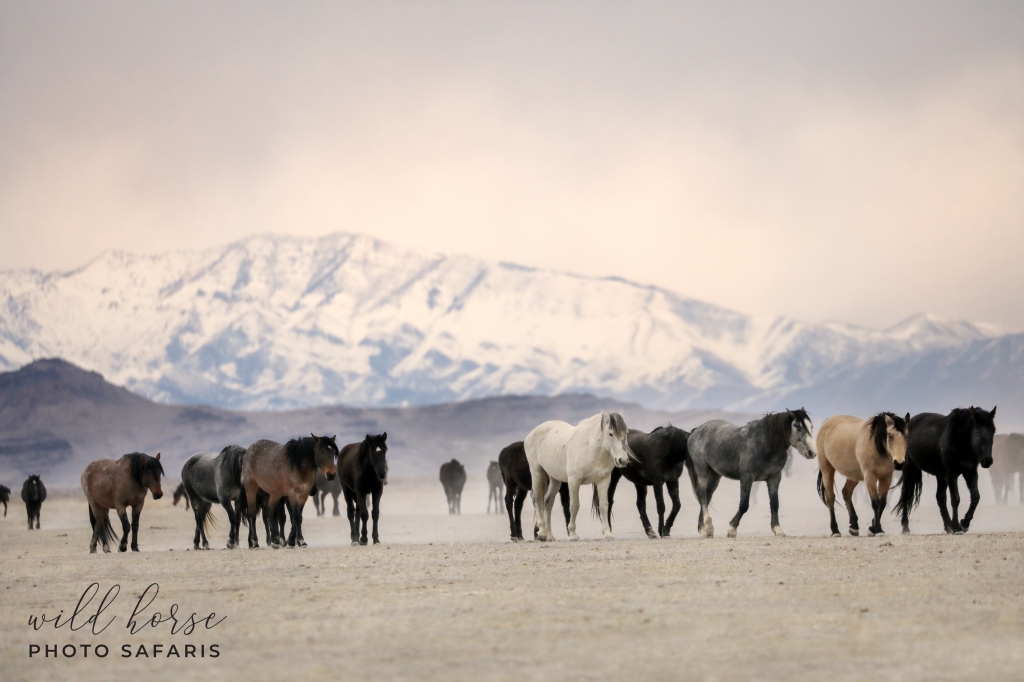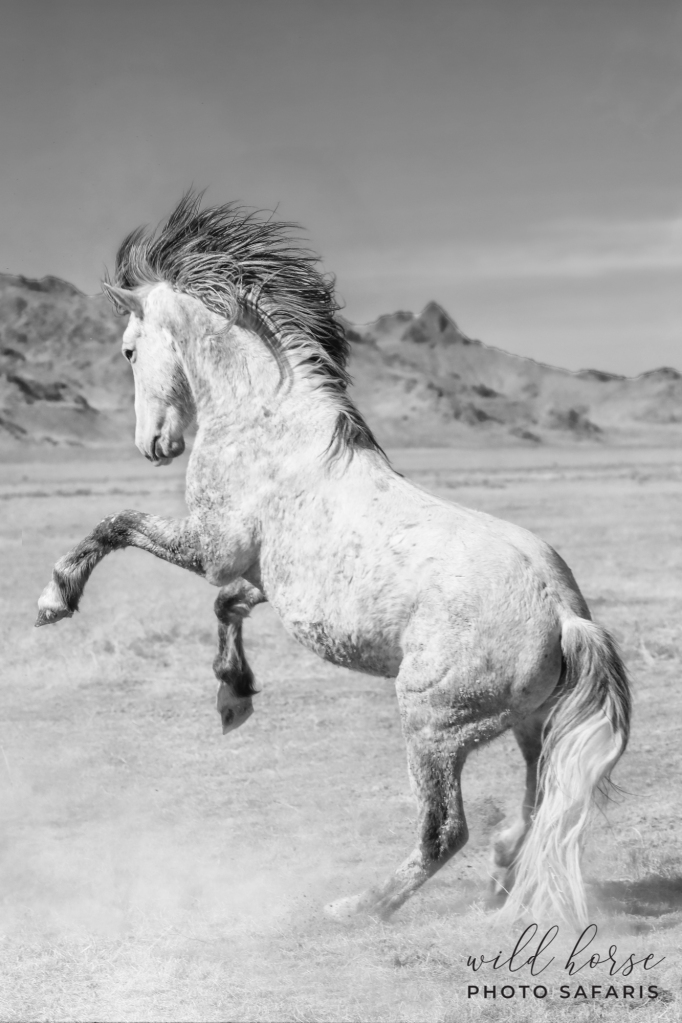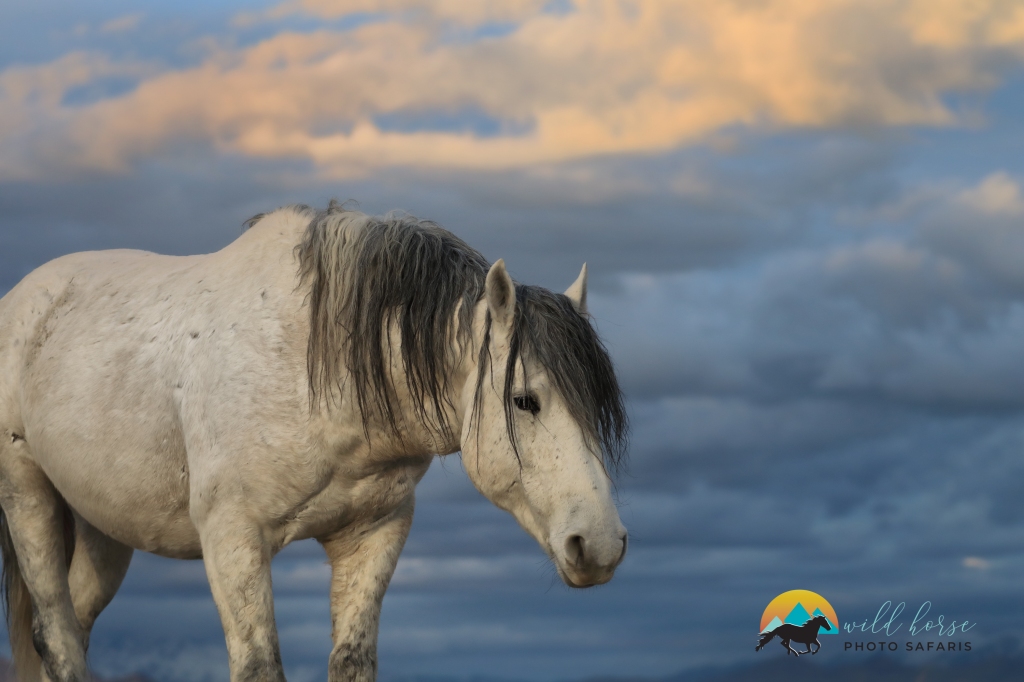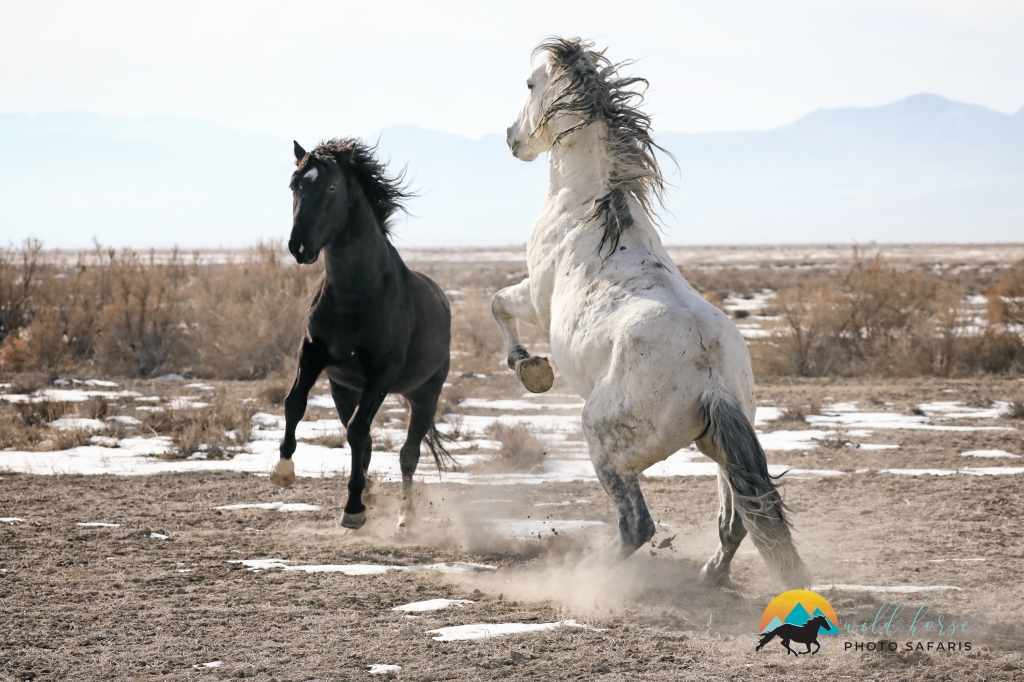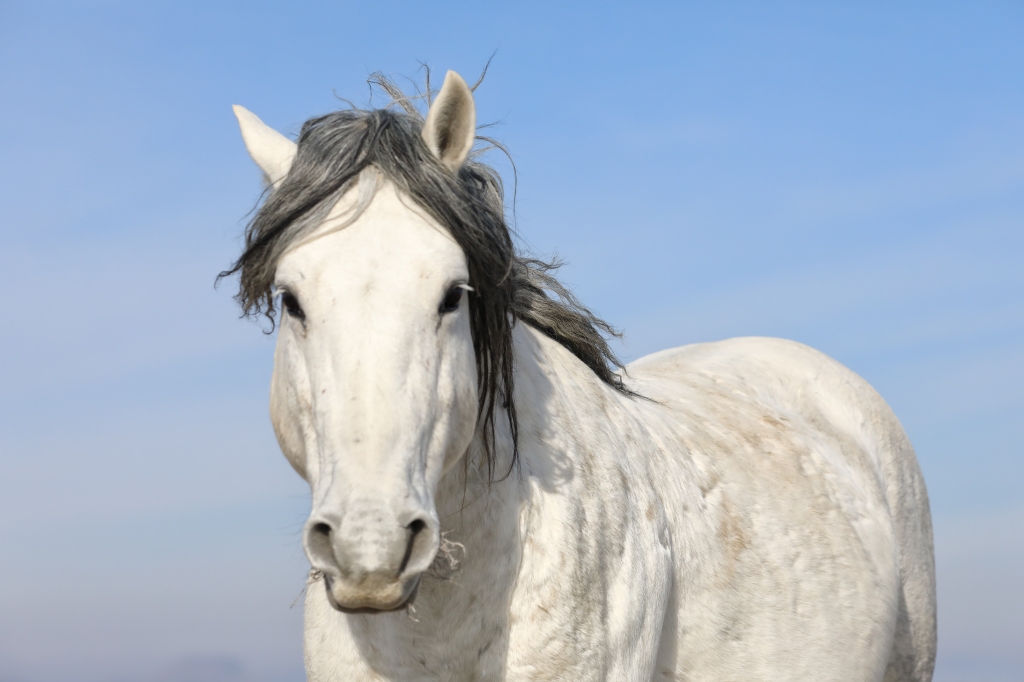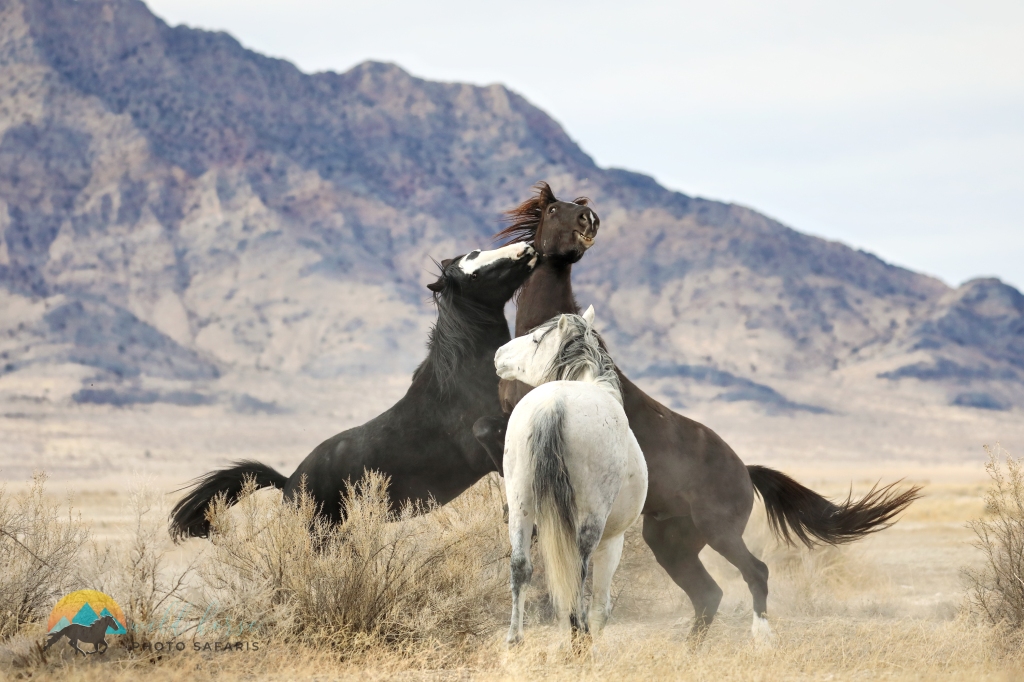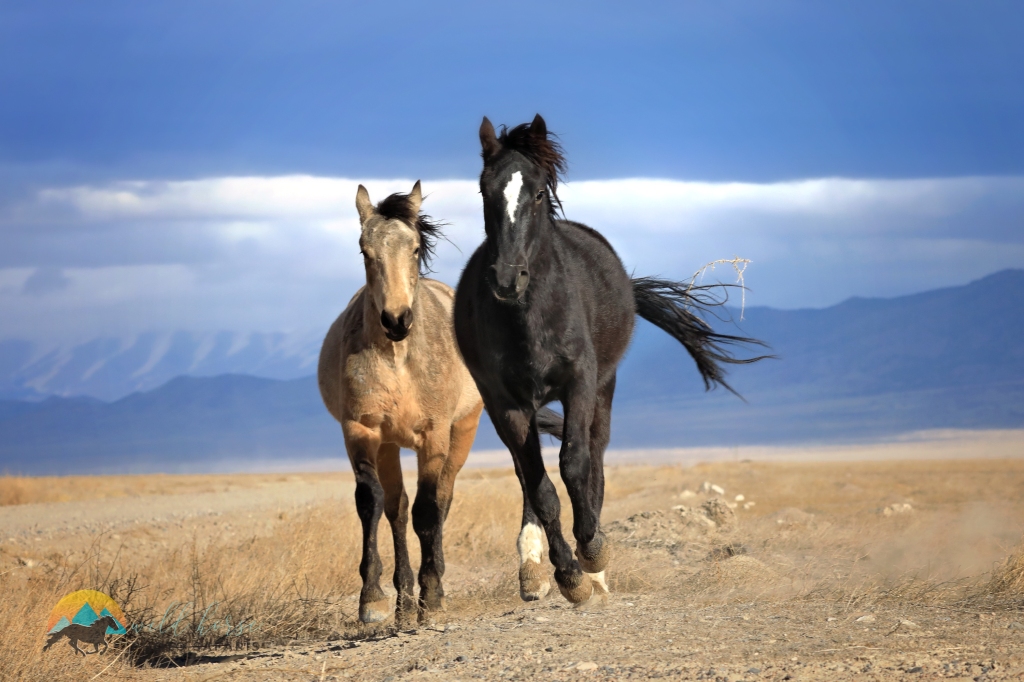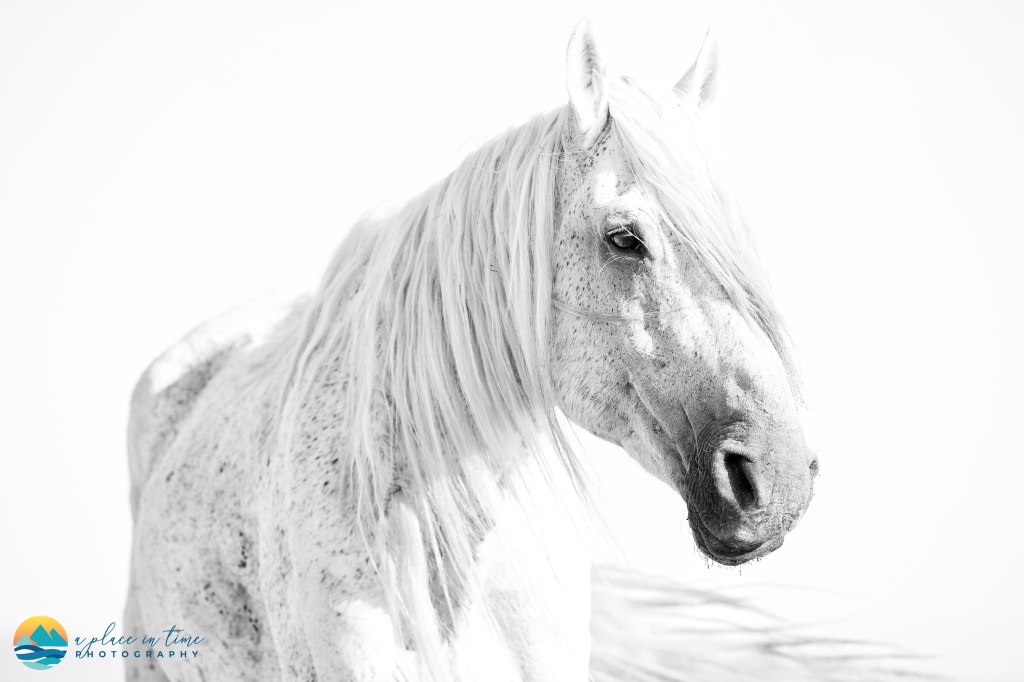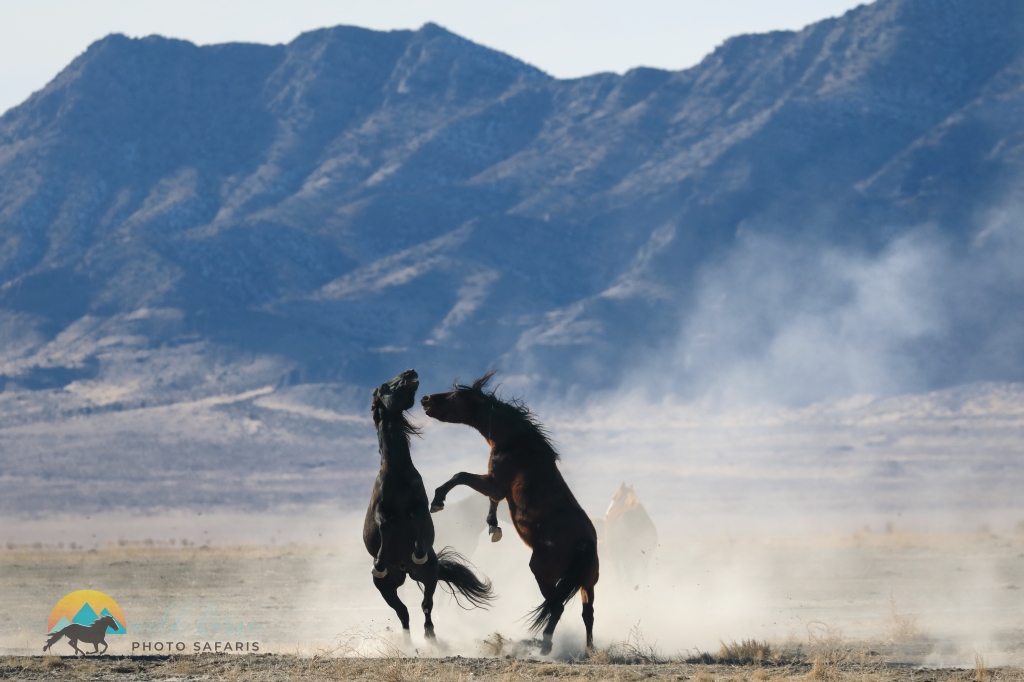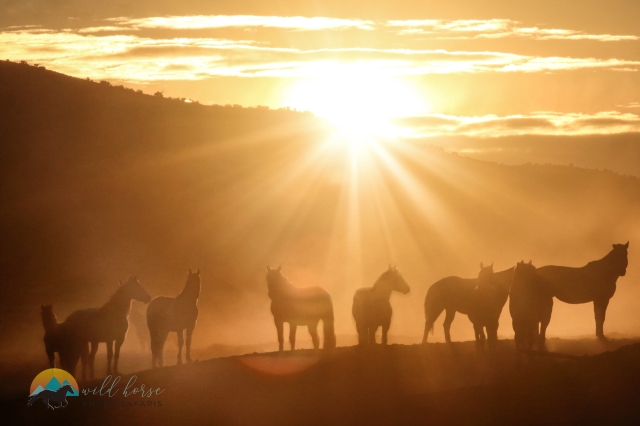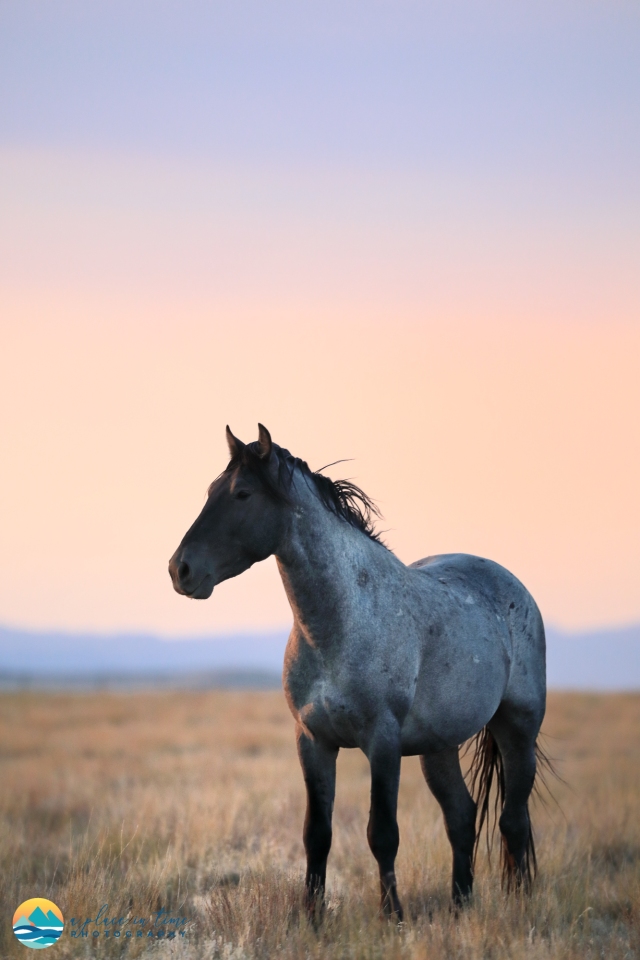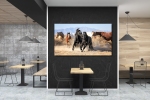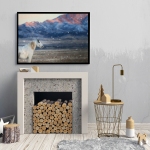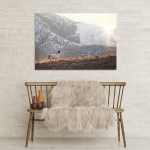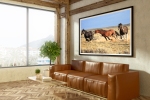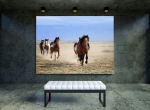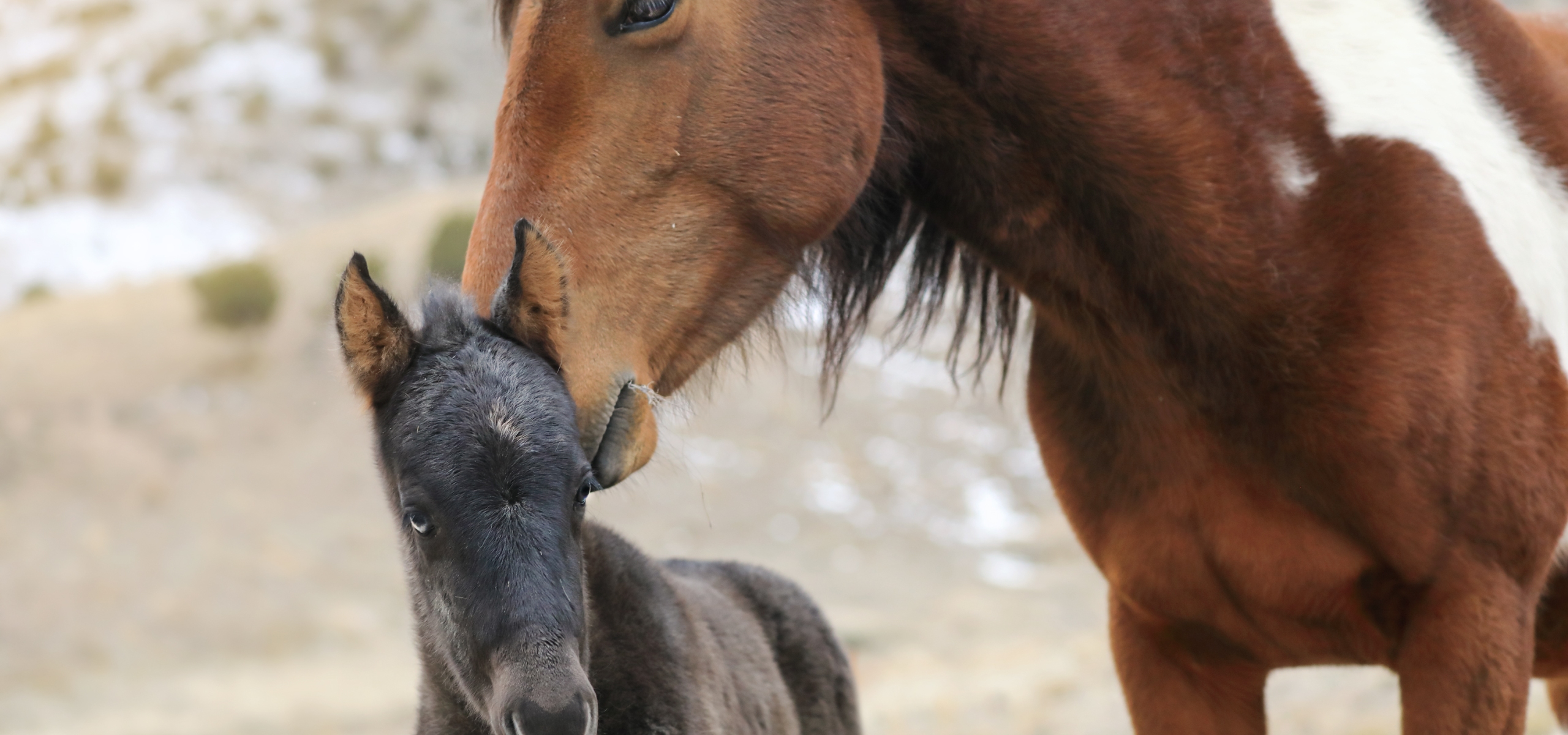
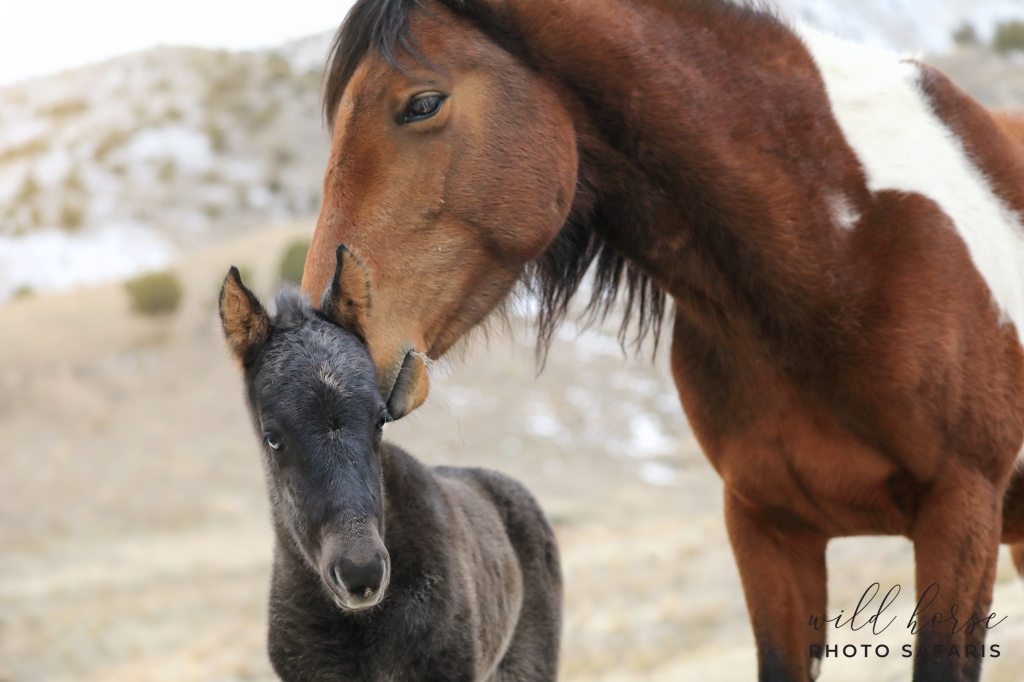
When I started this blog I was so excited not only to be able to share my images of the wild ones but also to share the stories behind them. That’s the thing I’ve always loved so much about photography is that I’m able to capture that one little moment frozen in time and preserve it. Memories are so important and I’ve seen too often that eventually they’re all we will have left.
I was completely oblivious to the storm that was brewing on the horizon and threatening to destroy the Onaqui families I have come to love so much. Exactly 10 days ago I got the news that the Bureau of Land Management (BLM) had given notice they planned to remove nearly 300 of the horses from the Herd Management Area (HMA). I remained in disbelief and held hope that somehow the information had been misconstrued. Then on the 2nd of March I attended the BLM meeting which addressed the removal of the wild horses and confirmed that 296 horses are slated to be rounded up using helicopters beginning July 12th and ending July 22nd, 2021.
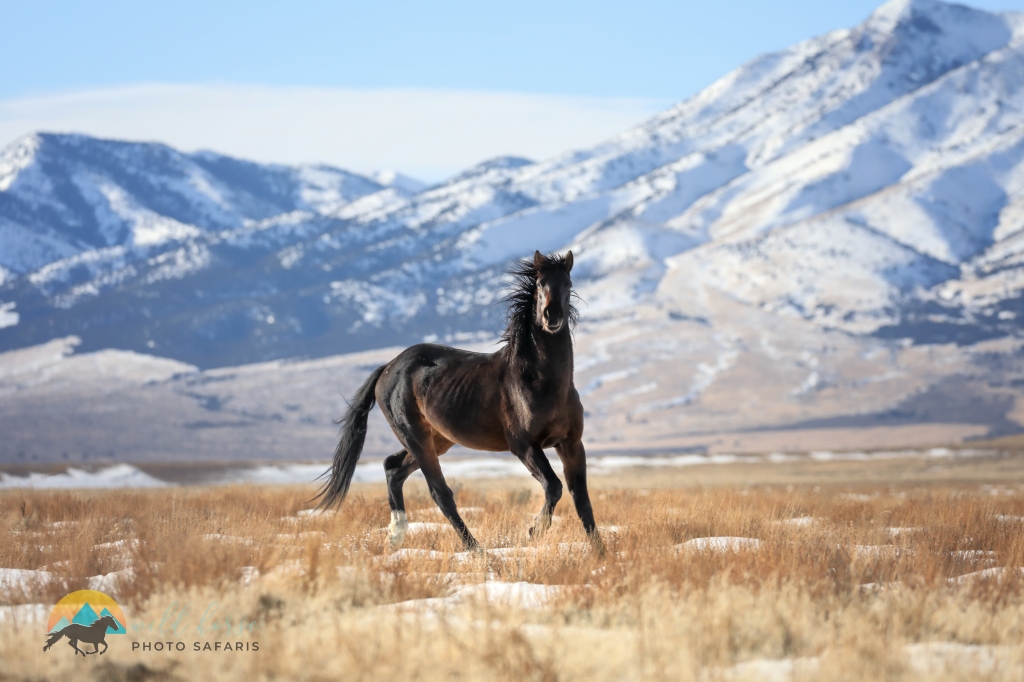
The Horses
The Onaqui wild horses have lived in the valleys bordering the Onaqui Mountains here in Utah since the late 1800s. They are visible from many spots along a lengthy stretch of the Pony Express route and are a historic icon and reminder of the Wild West. The horses live in two distinct groups approximately 15 miles apart – one at the south end of the HMA near the Simpson Springs campground and one at the north end of the range near Dugway Proving Grounds Army base.
According to BLM’s own website the horses “are in good condition” and anyone who visits the herd can easily verify that. The HMA spans across 205,394 acres and is 321 square miles total which is a desolate, remote desert environment. The only civilization close to the range is the Dugway Proving Grounds Army base. (https://www.blm.gov/programs/wild-horse-and-burro/herd-management/herd-management-areas/utah/onaqui-mountain)
In 2017 BLM reported that there were 450 wild horses in the Onaqui HMA and in 2019 241 of those horses were removed via helicopter round-up. An additional 2 horses were killed during that same round-up. This would leave approximately 207 horses on the range if using BLM’s numbers. American Wild Horse campaign vehemently opposed the 2019 round-up in the Onaqui HMA which you can read about here: https://americanwildhorsecampaign.org/media/two-sides-onaqui-mountain-wild-horse-population. They also spoke publically at the BLM meeting on March 2nd of this year however their future plans of involvement have not yet been made clear.
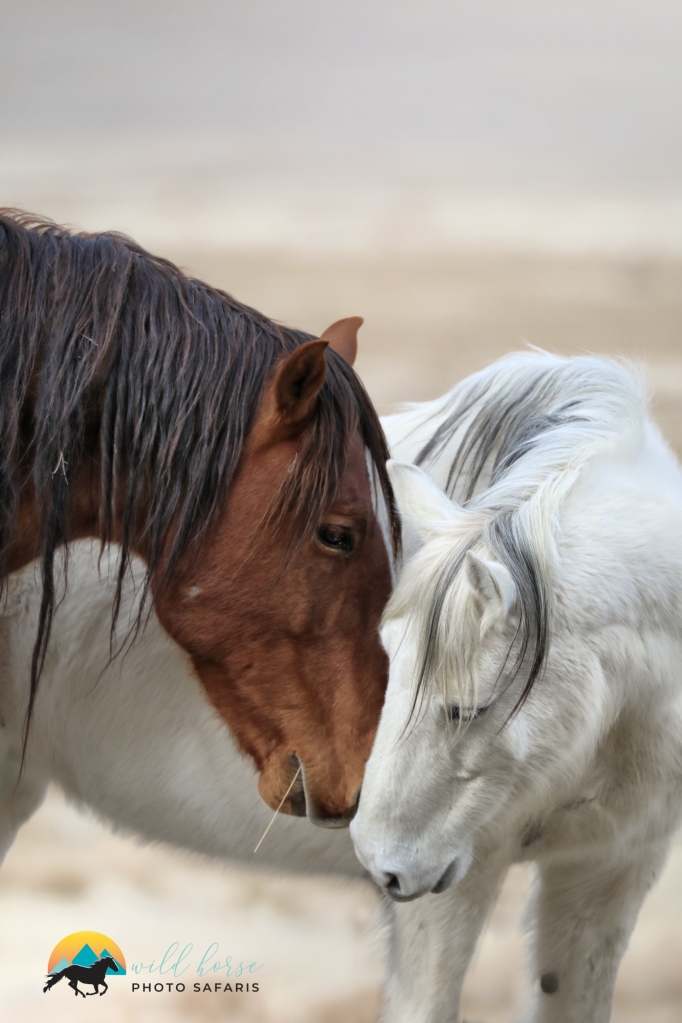
The Issues
All sides of this issue can agree I think that maintaining a healthy wild herd genetically, physically and mentally (keeping bands in tact) are of the utmost importance. This can be managed in a far more humane and cost effective way than a massive round-up which removes 400 of 475 animals. It can be achieved by implementing a proactive PZP program as has been proven effective with the McCullough Peaks herd in Wyoming among others. (https://www.blm.gov/programs/wild-horse-and-burro/partnerships/McCullough-Peaks) This PZP program administered by F.O.A.L in Wyoming has saved taxpayers roughly $6 million dollars over the past 9 years in the costs of long term holding for horses taken in a gather. That’s just for one herd.
One doze of the equine inoculation PZP costs approximately $27.00 and is administered via dart in the field. Fertility treatments start for mares at 9 months of age and repeat annually until they are 6 years of age at which point the inoculation is skipped so the mare can add to the genetic diversity of the herd. Once she foals the PZP is resumed. Assuming the average life of a horse in the wild is around 20 years old the cost of PZP for each mare would be a maximum of $513.00.
Compare that to the cost of housing this same mare in off range facilities which is stated to be $2,000 per year per horse. The life span of a wild horse in captivity is increased to an estimated 25 years. So assuming a mare is captured at age 5 in a gather the cost to taxpayers now becomes $40,000 for that one horses versus $513.00.
The current plan to capture 400 of the Onaqui Wild horses is also a huge threat to genetic diversity. BLM plans to reintroduce 104 of these 400 horses captured back to the range. These horses returned will be handpicked depending on age, gender and the female’s tolerance to being darted with PZP. Of these 104 horses 52 mares will be treated with PZP.
Taking into consideration that the Onaqui herd maintains itself in two distinct bands, the north and the south, which do not co-mingle, only returning such small numbers of horses to the range compromises the integrity of health and dynamics of the herd. The minimum number of animals in a herd to allow for genetic diversity and healthy breeding has been said to be 100. With such low numbers post round-up and inevitable destruction of their familial bonds and social structure disastrous results seem imminent.
The average reproductive rate per year of wild horses without PZP is 14.8% according to the Science and Conservation center in Montana. It has been shown that this reproductive rate skyrockets after gathers to as high as 50%. This is called a compensatory reproduction rate and happens because the herd feels the population threat and responds by increasing their rate of production. Hence why PZP is a far better method of herd management than massive gathers such as this one.
While on the topic of reproductive rate it has also been shown that wild horse populations faced with a decreased food and water supply such as BLM claims is plaguing the Onaqui horses actually self-correct with a decrease in their rate of population to adjust for these environmental factors.
For the 296 Onaqui Wild horses BLM proposes to gather @ $2,000/horse to house in off range facilities that is a cost to tax payers of $592,000 annually. Versus the cost of PZP to 200 mares @ $27/dose = $5,400/year. That is a difference of $586,600 annually.
Assuming the average horse will survive to be 25 years old in an off-range facility and assuming the average age of a horse captured is 10 years old here is the difference in cost:
- Cost of gathering 296 horses: $8,880,000
- Cost of administering PZP: $81,000
So not only can we be saving the American taxpayers $8,799,000 by forgoing this gather to pursue a more diligent PZP program, we can also be reaping the benefits by those same taxpayers who spend their money in the tourism industry supporting the local economy and businesses when they come into town to visit this wildly popular herd.
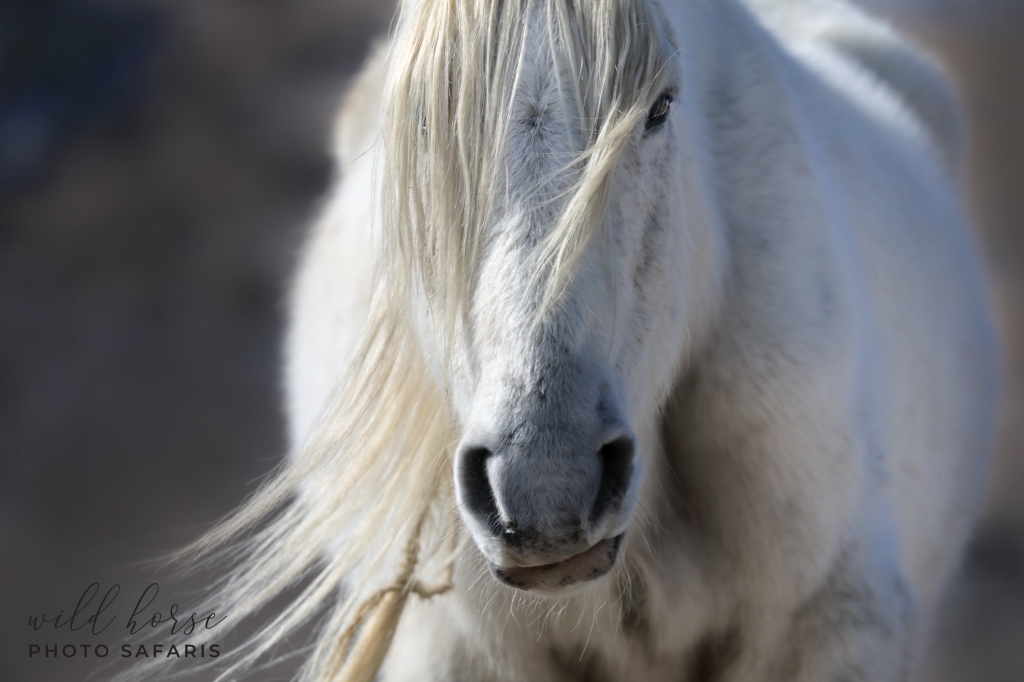
The Options
Because of the report prepared by the BLM and submitted to Congress under the previous administration 20,000 wild horses and burros are threatened with removal from HMA’s per year for the next 3.5 years. That is double the animals which have been removed from public lands in years past.
The reasons for removal of the Onaqui horses are stated to be “AML/Outside the HMA, water issues, forage issues.” Gus Warr also stated during the BLM public meeting on March 2nd that removal can occur at the request of private land owners. We have had a very dry winter here in Utah and the horses have been getting their hydration from snowfall and runoff up to this point. There are also 3 watering holes that are man-made and connected to wells that I’m aware of which the horses drink from during the hot, dry summer months.
PZP is paid for currently by BLM because it is a budgeted item. It has been made clear that lack of budget is not the reason for this round-up. Further, volunteers are in place to administer the equine inoculation which helps take the burden of manpower off the shoulders of the BLM.
Some reasonable alternatives to consider may include the following (in no particular order):
- Postpone the round-up until more scientific research can be gathered as to the nutritional needs of this herd of horses and access to food which will meet those needs. To include an independent evaluation.
- Increase the amount of PZP given to mares in both the North and South herds and allow for time for this population control method to be proven. (PZP is shown to be 91-98% effective at preventing pregnancy in mares in other wild herds)
- Decrease the number of horses being gathered
- Opt for a more human round-up such as bait trapping
- Drop grass hay on the range intermittently if body conditions become cause for concern
Worst case scenario if this round-up continues as scheduled we will need to find suitable adopters for the horses captured and ideally will try to keep family structures and/or social bonds intact.
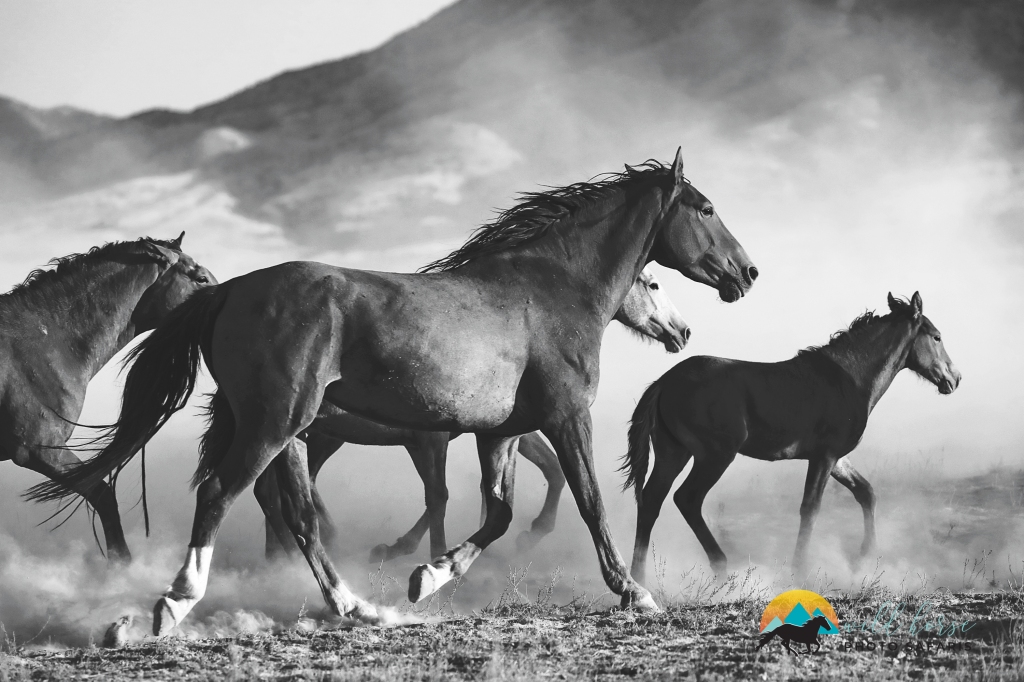
What Can You Do To Help
Believe me I ask myself this every day. All day. I’ve been thinking so much my brain actually hurts.
I will continue to share verified information and status updates as they become available. I have had a great relationship personally with our local BLM office to date and would love to keep it that way so I’m definitely advocating for a solution where the horses are allowed to live their best lives in the wild and whatever outside help is needed to see that this happens can be coordinated.
- Please contact the following and express your support at keeping the Onaqui herd healthy and wild while ensuring that they are humanely managed on the HMA.
- Senator Romney (202) 224-5251 or via email: https://www.romney.senate.gov/contact
- Salt Lake City Mayor Erin Mendenhall (801) 535-7704 mayor@slcgov.com
- Salt Lake City Council (801) 535-7600 council.comments@slcgov.com
- Contact the American Wild Horse Campaign https://americanwildhorsecampaign.org/
- Reach out to equine rescues in your local area to let them know about this upcoming roundup and see if they would be interested in adopting some of these wonderful horses
- Contact President Biden and Interior Secretary Haaland to put a stop to the proposed 20,000 horses and burros slated to be removed from public lands. It’s a huge loss of our national heritage as well as an excessive drain on taxpayer resources and money to make wild horses live their lives in government pens.
- Reach out to local news agency’s in the Salt Lake City area in support of humanely managing the Onaqui horses in the wild and forgoing the round-up in July.
- If you live in the area and know anyone willing to lease land where rounded-up Onaqui may be kept once adopted that’s great to know!
- Contact Gus Warr and Tami Howell at the Salt Lake City BLM who currently manage our Wild Horse & Burro program
Gus Warr –(801) 539-4057 email gwarr@blm.gov
Tami Howell – (801) 977-4300 email thowell@blm.gov
- Follow Facebook pages such as Save the Onaqui Wild Horses for updates and news bulletins
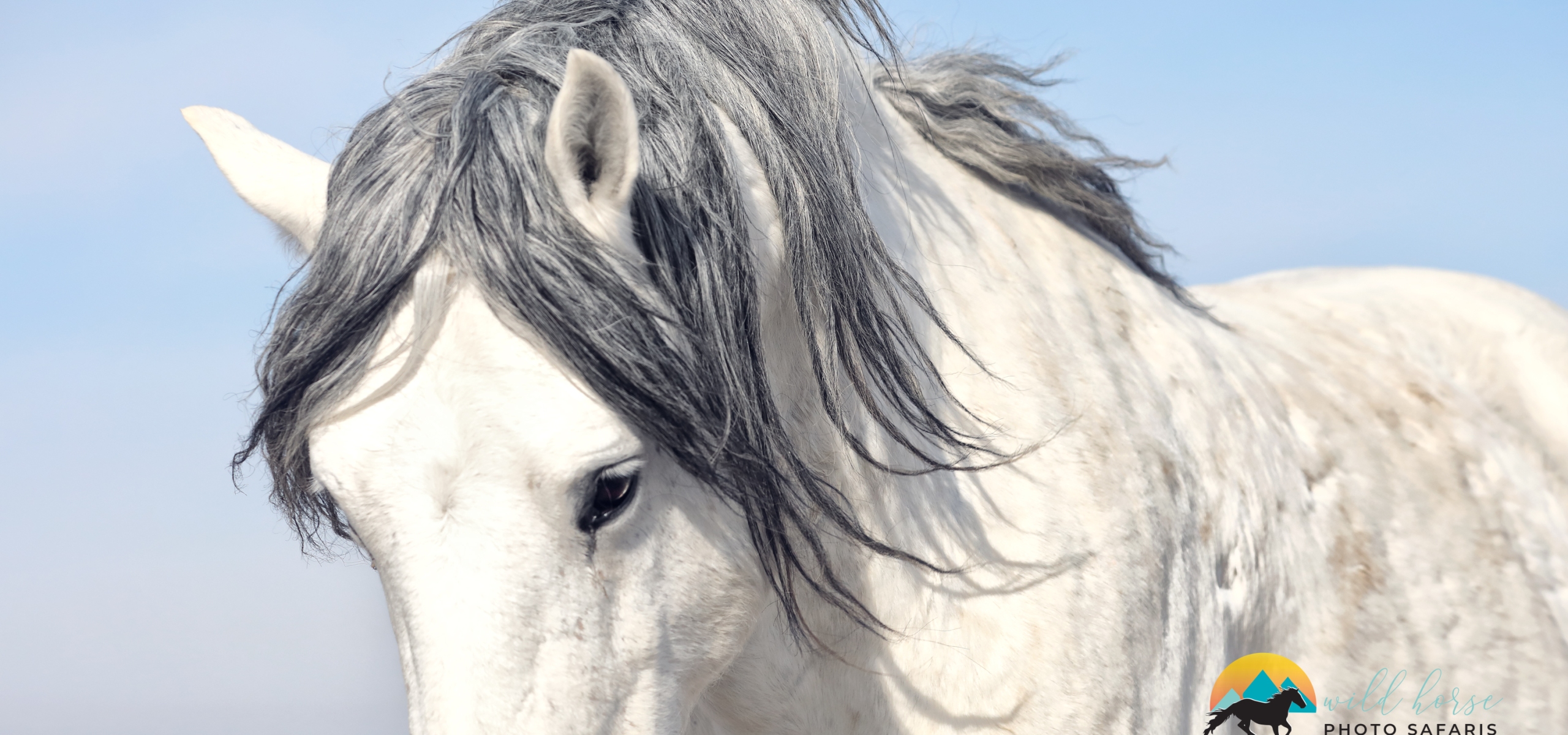
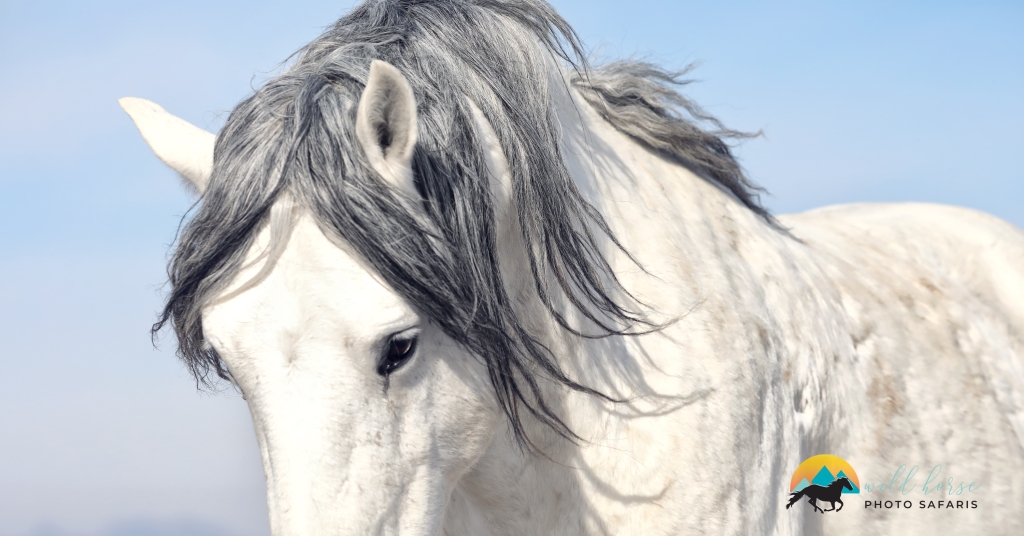
There’s just something about those greys. Some may appear to have more of a true grey coloring while others fade so much with age they turn nearly white. It’s the fading and aging that really gets me. It gives such a distinguished look. Something almost regal. And the way the light catches and dances off manes and tails – especially as thunderstorms approach with those backlit dark midnight hues approaching.
I almost hate to play favorites because I think that all the wild ones should be given the spotlight to help people identify with them and come to know them personally even if they don’t have the ability to do it first hand. However lately I just can’t seem to help myself but to try to find a bachelor stallion called Maverick (OQ237gs) who spends his time in the southern part of the range with 3 other stallions, one of which is Eclipse (OQ174zS) a foot loose and fancy free young black stallion who has a jovial nature and mostly likes to “horse” around with anyone who’s willing.
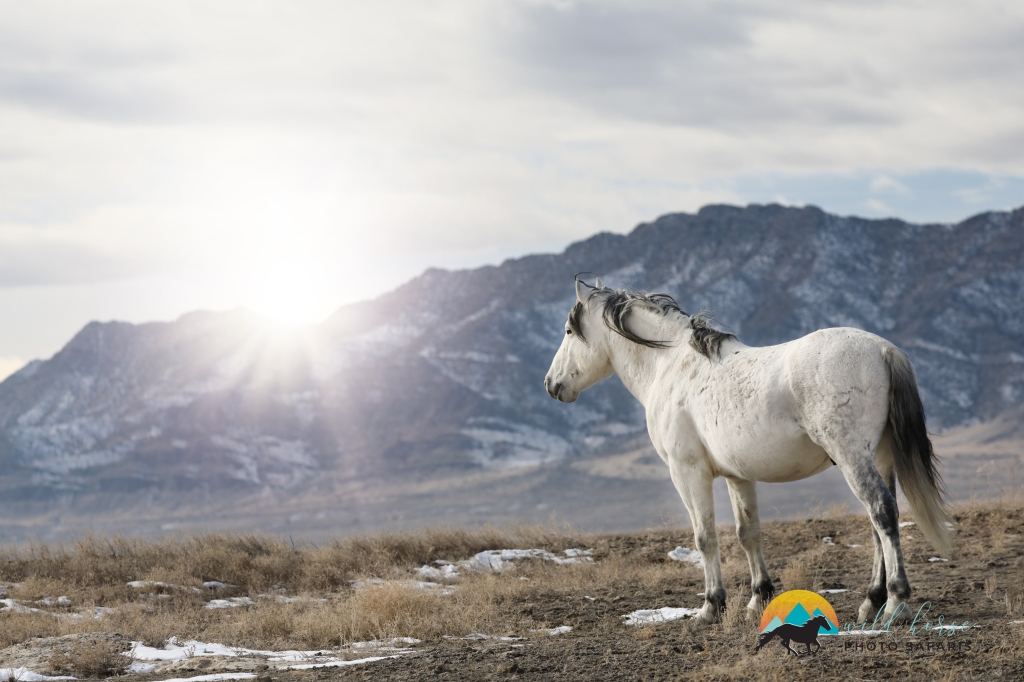
Maverick by contrast is much more subdued and seems to be like the big brother of the group. Quiet, keeping a watchful eye out, and willing to step in if someone gets too rough with his friends. Often when I find him he’s with the rest of the southern herd but always off to the outskirts a bit just calmly standing taking it all in. He seems to get amused when Eclipse or one of his other two bachelor stallion buddies start kicking their heels up to play but never quite amused enough to join in.
Some of my favorite images to date are of Maverick because he has such a presence about him. It takes an above average amount of patience to catch him in a natural pose because he has a bad habit of standing with what looks like a stink eye expression and his ears slightly pinned. At first I didn’t know what to make of him, but the more time I’ve spent now I just accept that more often that not he kind of is just annoyed. I can appreciate that because if I had to be around other humans 24×7 I’d definitely be mostly annoyed too.
But I personally think the most beautiful thing about this horse is that when he stops glaring and starts going about his business doing regular horse things he will absolutely take your breath away. Especially on those days when the winds are downright ripping through the range and his mane and tail are equally as uncontrolled. It’s one of those moments where you know this is exactly how it should be and how it should look.
Wild and free.
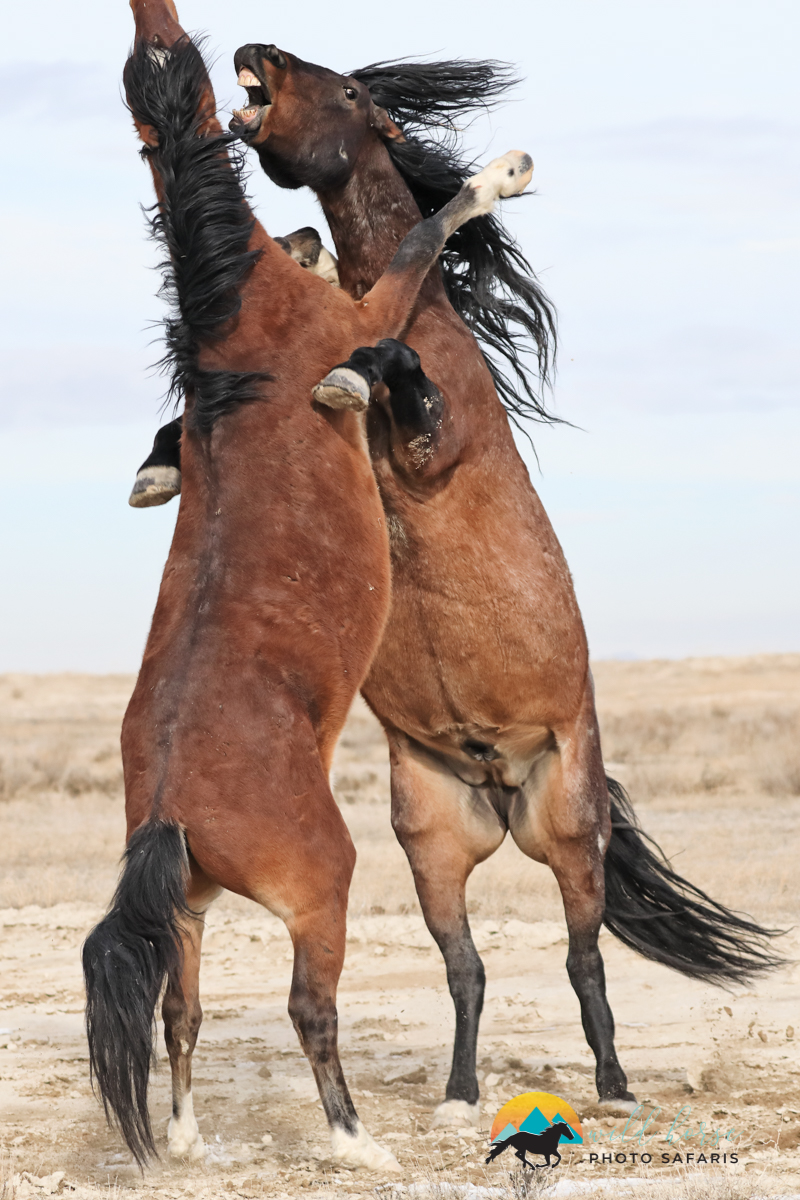
I can’t ever begin to count how many times over the years I’ve heard the saying “choose your battles wisely.” I think as we all get older and more seasoned at life you realize this is a critical lesson to learn. But in the meantime we all dive headfirst into choices that in hindsight probably weren’t best fork in the road to take.
Last week was brutally cold on the range and I’m not even saying that as a girl who’s spent the last 14 years in the tropics and up to this point have been nearly hypothermic when it got down to 68 degrees. It was just bone chilling, biter cold. I’ll go out on a limb and give it credit for being in the upper 30’s which in and of itself isn’t a big deal until you factor in the whipping winds that tear through the valley and assault everything in it. Including me. Including the horses.
It was another long drive out to the very southern borders of the Onaqui range where the drifts of snow are still prominent and make it look like a crafty way of abstract painting the sandy desert white. The roads were clear and the skies were filled with valley haze and brooding clouds sat on top of the surrounding mountains. The low-lying sage was rustling and small dust devils occasionally blew by.
I had a long walk of nearly a mile out into the middle of nowhere desert before I finally found the whole herd together milling about and unsettled. The winds always seem to get the horses aggravated and they stampede and spar in a haphazard and relatively disorganized fashion compared to their normal behavior. This day they were all split up in bands like usual, but staying in relatively close proximity. The soft light provided for stunning backdrop shooting in any direction and I tried to take advantage of it as long as I could keep feelings in my fingers.
The image above is a part of a much a larger set which is a great example of choices. Even horses have them.
The bay stallion on the left of the frame was resting seemingly peacefully in the middle of his band as was Dash, the roan stallion on the right of the frame (OQ220brS). I didn’t notice anything except that the bay all of the sudden became very alert with a slight tilt of his head and his ears perked forward. I was distracted by a younger stallion in the group so I wasn’t too focused on his band stallion but noticed the younger stallion shift his attention. The bay took all of two or three steps and then bolted right in front of me where the Dash came out to accept the challenge.
To his credit, Dash could have ended the fight a lot worse than he did. Although the photos look dramatic, he only gave his challenger a meaningful nip on the cheek and when the bay stallion faltered and fell at his feet he didn’t push, Dash simply waited for him to get back up where they had one final head shaking exchange before each returned to their families.
In hindsight I’m sure the bay stallion realized his poor choices as he was laying at Dash’s feet and maybe in the future he will think a little longer before he tries to pick that battle again.
Photos below are some of the highlights from the rest of the sequence – beginning to end. Enjoy!
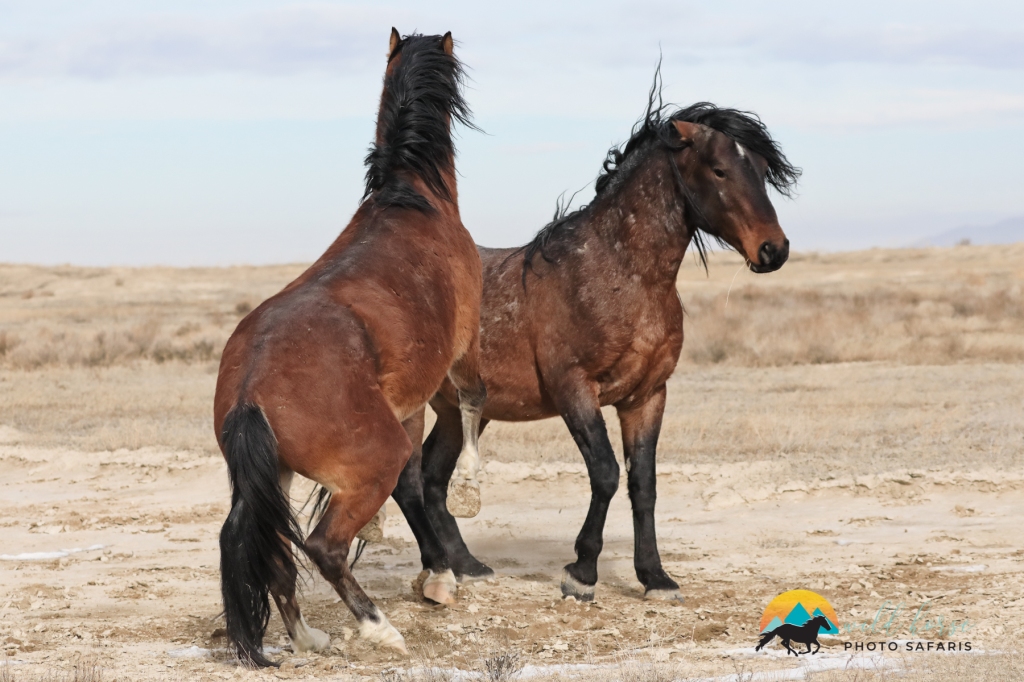
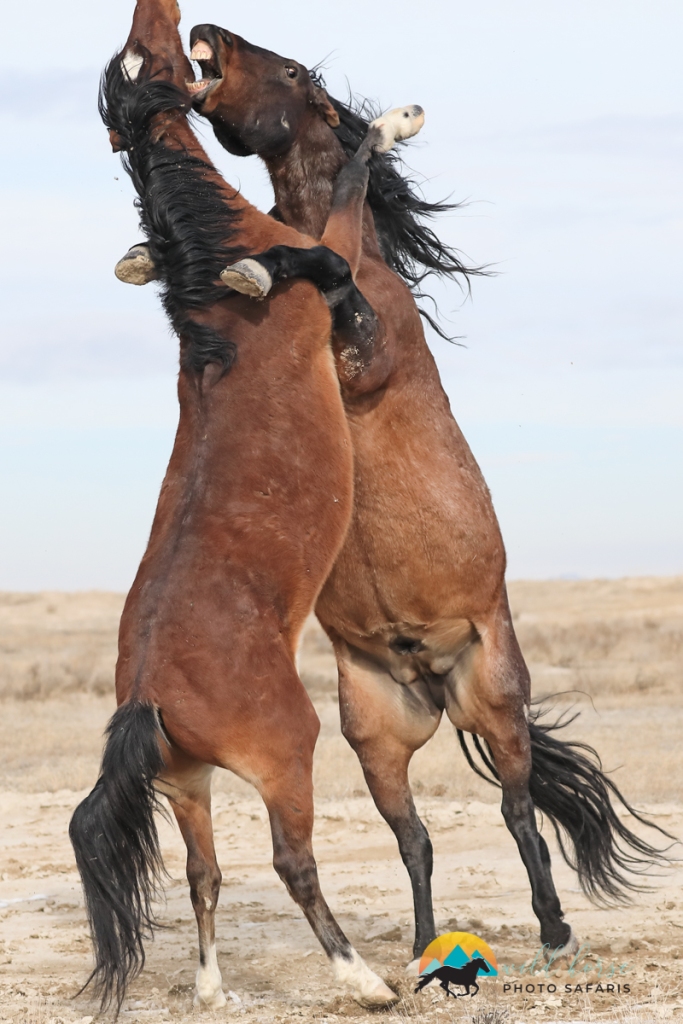

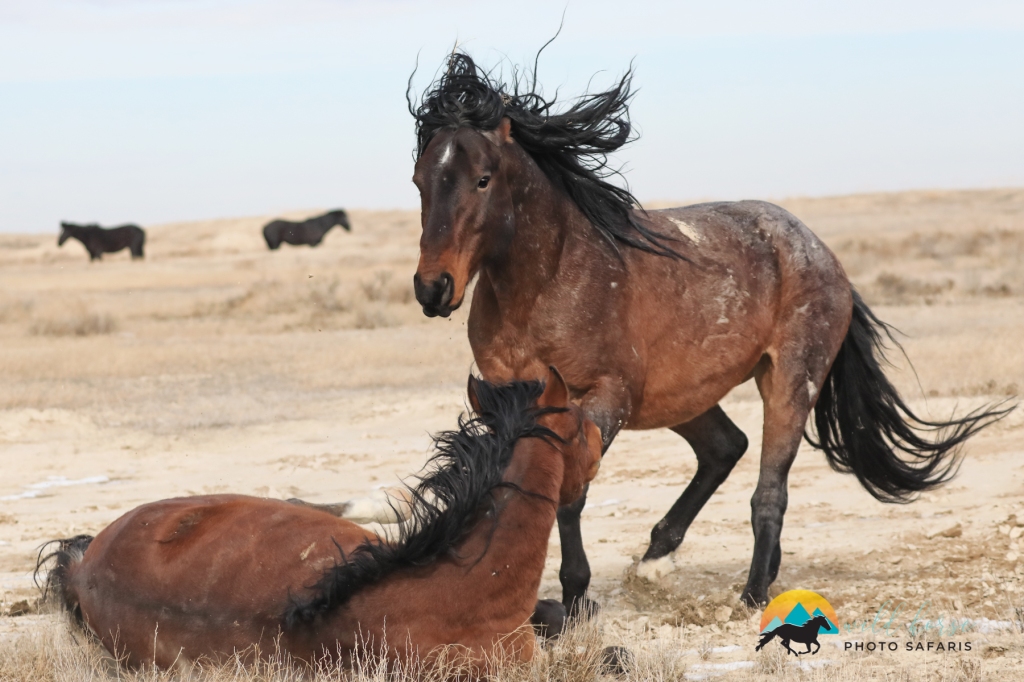
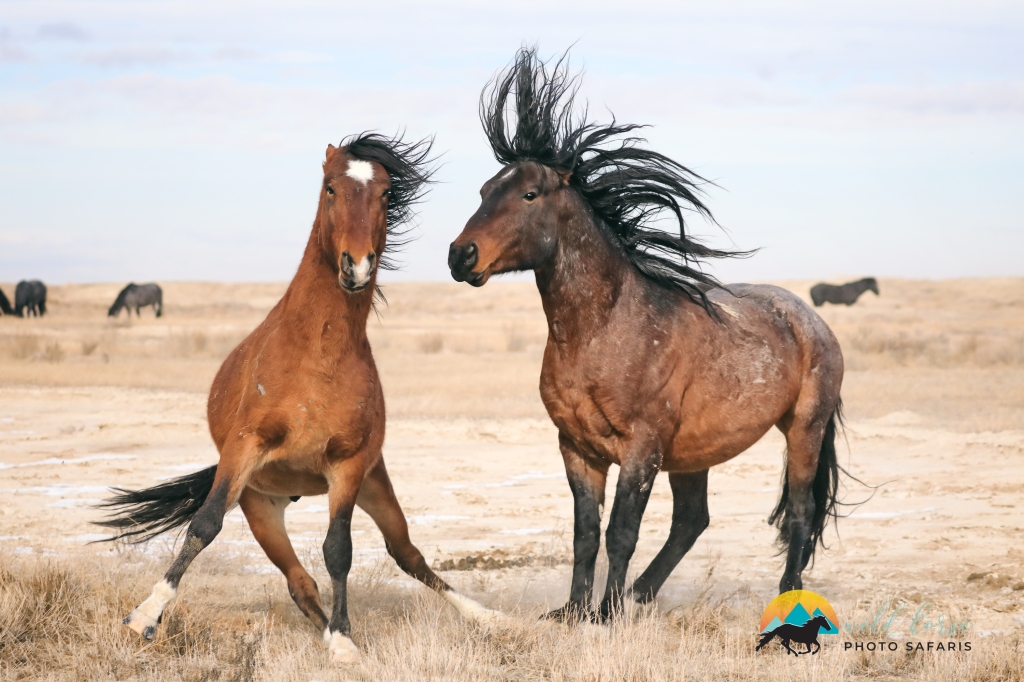
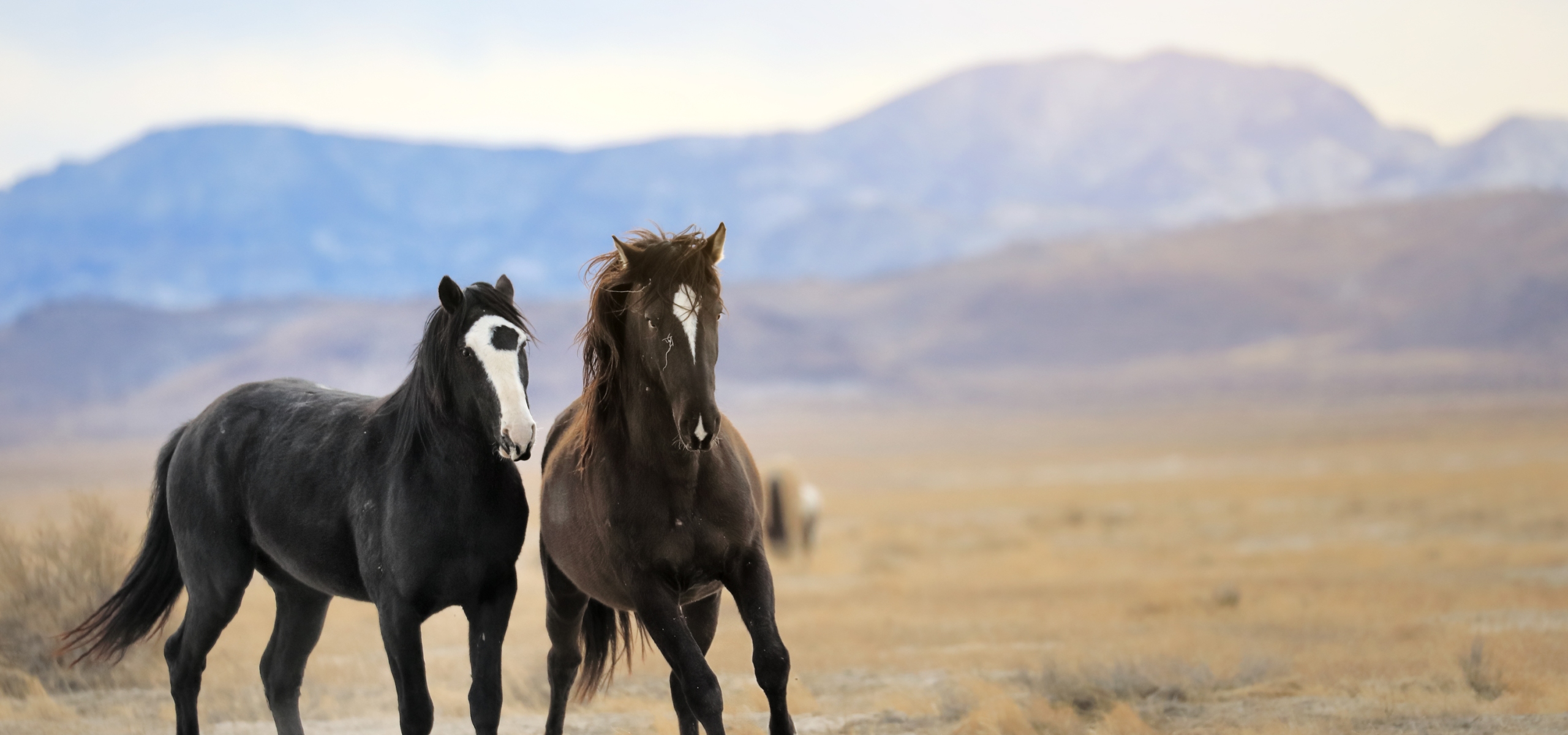
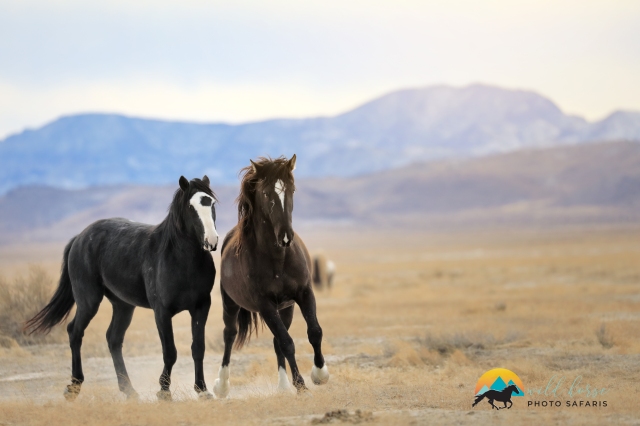
It was a rather brisk, but dry day late last December when I decided to venture out to the range to try to find the Onaqui wild horses. It had been a couple days since I was out exploring the range and I couldn’t help but wonder if they had changed locations and if the northern part of the herd had decided to come out of hiding.
With a hazy layer of clouds settling in over the surrounding mountains it provided for beautifully diffused light filtering in here as the mild breezes guided the haze to a place more of it’s liking. The pass was still filled with a couple inches of snow from a recent storm but the rest of the range was remarkably dry without much indication that moisture had ever passed through.
Dropping down into the north end of the range there was still unfortunately no sign of the northern herd (Davis Mountain Group) and it’s now been several weeks since I’ve spotted them more than once at sunset as they briefly emerged from beside Davis Mountain. All 150+/- of them. I pressed on to the south toward Simpson Springs and beyond where I’d been having success in locating the southern group of horses. Although smaller in number they’re still equally diverse in appearance and put on a good show for capturing some really stunning images.
I took out my binoculars and after a few minutes of scouting was able to locate the herd far off in the distance, deep south toward Fish Springs. I eventually pulled up even with them and squeezed off to the side of the road before starting the trek on foot to get out to where they were. The seemed very content in their current location just resting, grazing and getting hydration from tiny patches of snow that had been blown under the sage days earlier.
I had a good half mile walk ahead of me and by the time I finally reached them I was able to identify almost all of the members I’ve come to be so fond of. Except for one. There is one particular horse that I’ve become convinced actually might want to put me in the ground. I’m chuckling as I type this which is I think atleast a good sign.
The image above is called The Challenge not because of what you’ probably think. At first glace it appears the young black stallion with the baldface in the back (Eclipse #OQ174zS) is challenging the stallion in the front. But that’s not the case. These two young stallions were “horsing around” when the front stallion who I haven’t yet been able to identify but do have a couple choice nicknames for, decided to tear straight for me with Eclipse on his heels. They both raced past me about 15 feet away then continued to play wrestle at a more comfortable distance while their buddy Maverick (#OQ237gS – grey stallion pictured below) looked on.
Eclipse was born in 2017 and has always had a really pleasant, mild demeanor in addition to being a very handsome horse model. This new stallion is equally beautiful but much more foul tempered. For a couple weeks now he will leave his mare to tussle with the nearby bachelor bands made up of either Maverick and Eclipse or a stunning paint nicknamed Jasper (#OQ137bpS who I lovingly call Romeo).
Without fail after these friendly jousts he seems to not be able to help himself from coming after me to prove a point. I’m still trying to determine if that point is that he hates all humans or if I’m just extra special. I’m guessing soon enough he’ll make that clear.
It doesn’t matter how wide of a berth I give him he’ll still charge. Usually in this situation waving your arms and backing slowly away to give them additional space immediately relieves the tension. Not with this guy. That just pisses him off more and he comes after me again with renewed vigor. There have only been two tactics proven effective…. (1) if another stallion known as Sparrow (#OQ211zS who I affectionately call The Sheriff) decides to intervene on my behalf which he has done a couple times now – thanks buddy! or (2) if I start swearing like a sailor and take a couple steps towards him instead of backing away. Apparently even the horses know when certain words are being spewed the humans aren’t playing around.
For the record I much prefer option 1 over option 2.
I’m looking forward to the days the weather warms up a bit and the horses return to their normal (and more easily accessible) stomping grounds but in the meantime I just try to keep a keen eye out for my new nemesis and enjoy the company of all the other sweet tempered and patient wild horses out on the range.
To enjoy more images of the Onaqui Wild Horses click on this link.
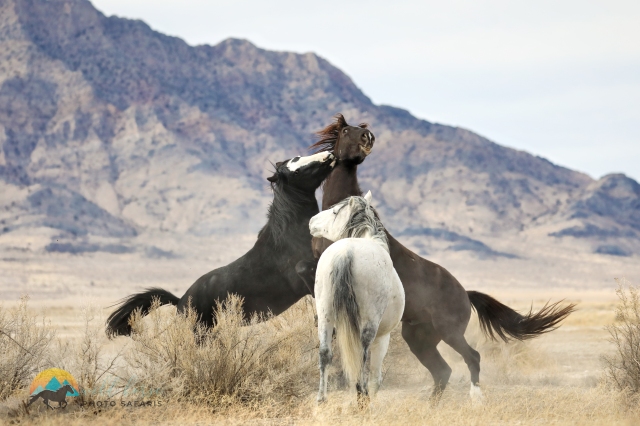
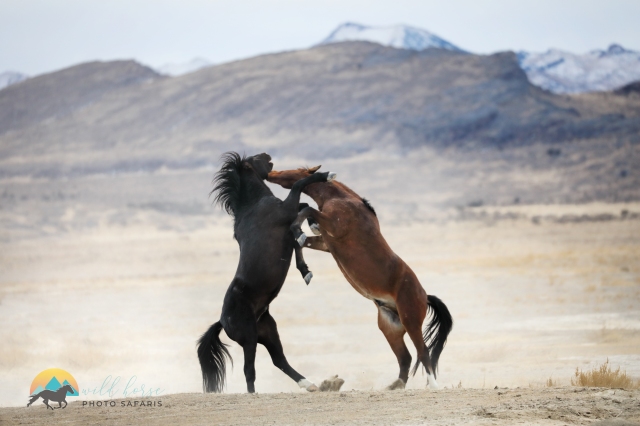
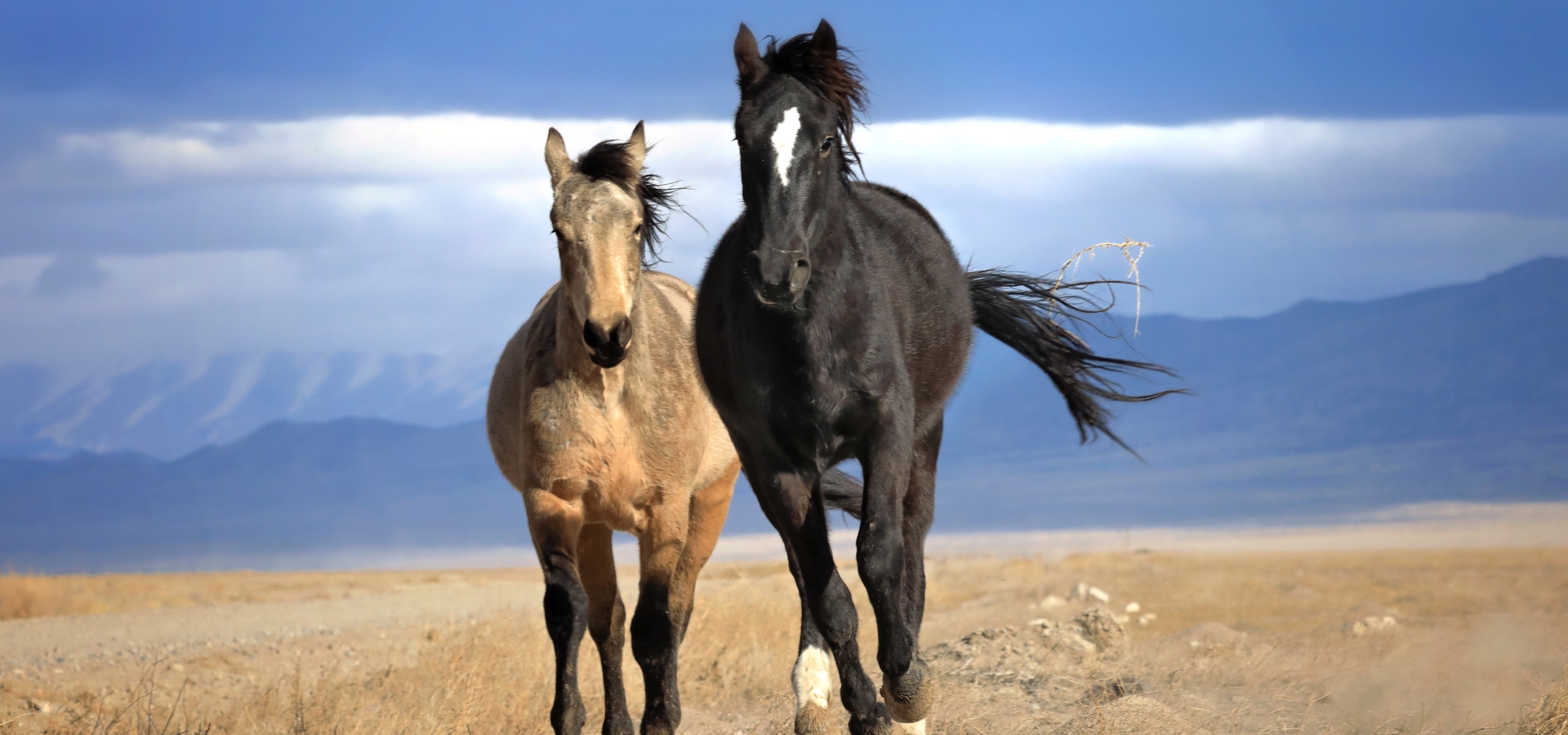
2020. The year of change for many.
If someone would have told me in February while I was struggling through heaps of mud and over volcanic boulders in the high elevation rainforests of Rwanda and Uganda searching for gorillas that only a month later my beloved island would close down with National Guard patrolling everywhere closing highways or that all major airlines except for one would have cancelled their contracts to fly to/from the neighboring Hawaiian islands it would have seemed like a fictional horror movie. But then it happened.
Businesses closed. Many forever. Tourists were all but banned from entry for 9 months. Cost of transportation of goods to neighbor islands via barge went up 46% and planes still weren’t flying. Even between islands.
The first couple months I made a point to try to do something positive each day. Mainly exercising on a favorite forest hike or going for a paddle. Fortunately exercise was always something deemed as “essential” and thus allowed, atleast on Maui. I took my cameras along and snapped images on the now deserted beaches and underneath the pristine offshore waters where boats no longer frequented. I started writing a blog to chronical the daily changes in rules and regs and how it was impacting the local people and economy. It also served as a way to post lots of wonderful images around the island to bring a little aloha back to friends and clients lives who were missing the islands dearly.
I had a trip scheduled the first week of August to a gorgeous but remote costal area of Alaska to camp and photograph brown bears which I’ve done many times. It was looking favorable that plans would prevail despite numerous airline cancellations. But then we got word 3 weeks prior to takeoff that the campground would not be opening for the season. The trip was now an impossibility.
Considering the only airline flying in and out of Maui during the pandemic was Delta my options for re-routing were limited to say the least and changing dates wasn’t in the cards. They had four flights a week to and from OGG so you chose your itinerary with care.
On a whim I remembered hearing about the Onaqui Wild Horses not far from Salt Lake City. As fate would have it the Salt Lake Airport was probably one of the only airports in the country I felt confident I could fly in and out of through LAX without fear of getting stuck without an option to get home.
One of my Alaska travel/photographer buddies drove down from Montana to meet me at the Salt Lake City airport and we headed out to the West Desert to photograph wild mustangs instead of bears for 10 days. We were fortunate enough to get a room at the Dugway Army Base hotel that borders the range (that panning out is still a minor miracle itself) and so for 10 days dawn ’til dusk were spent in the scorching heat up to 108 degrees with billowing dust and sometimes gale force wind blasts. Thousands of images were captured and an idea was born.
I began to wonder if all this talk of wildlife guiding over the past several years might be something I should actually pursue. It had come up many times to guide photo tours in various regions of the US and beyond but for one reason or another it just wasn’t feasible. Until now. My home as I know it was slowly being decimated by more and more closures. I wasn’t getting but a smidge of my regular work and starting over for a third time on the same island just wasn’t something I was willing to do.
Fast forward 6 weeks and a plan was hatched. I boarded the same Delta plane and back to Utah I came the last week of September. I had put my house on Maui up for sale on a hunch and gave myself 10 days to decide if I could make the desert my new home base. Somehow in those 10 days I managed to buy a new home, meet a wonderful realtor turned friend, open bank accounts, get PO Boxes and fall even more in love with the wild horses than I imagined. I was absolutely terrified but the ball had been set in motion.
Within 4 days of returning to Maui I was under contract to sell my place and boxes were being packed. I spent all the time I could soaking up island hikes and ocean vibes while working on the daunting process of moving my existing photography business (A Place In Time Photography) and creating a brand new business to provide private guided photography tours for guests to experience the Onaqui Wild Mustangs for themselves.
Just like that Wild Horse Photo Safaris was born.
I’ve been so blessed to have a smooth transition into my new town and my new home and have already logged more hours on the range than anyone would ever think possible. I’ve worked tirelessly to launch a new brand of Fine Art Creations from my images captured in the field. It is my mission to both help raise awareness into the plight of the wild horses and also to capture their uniqueness and strong spirits through the images and artwork I create. The only way I can truly accomplish this is by spending extremely long hours getting to know individual members of the herd and gaining their trust so that I can move with and around them with ease without causing any disruption to photograph their most true emotions.
So I welcome you and thank you for reading this far! I am so excited to be able to share new images and stories here depicting these gorgeous animals and their lives playing out wild and free on the Onaqui Wild Horse HMA (Herd Management Area) in Western Utah.
All direct inquiries are welcome regarding the horses, tours, artwork or collaborations.
Mahalo Nui Loa,
Jen
